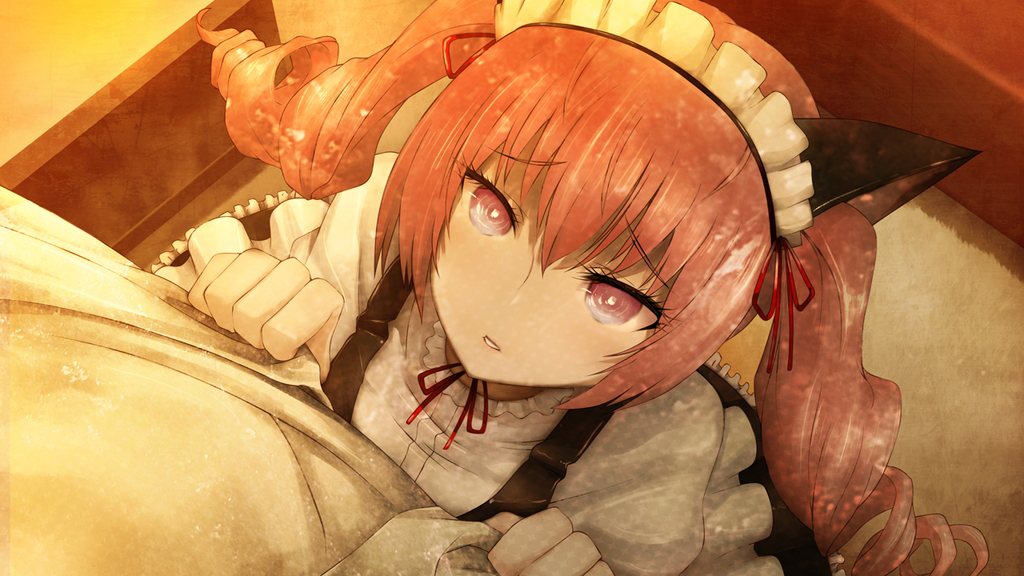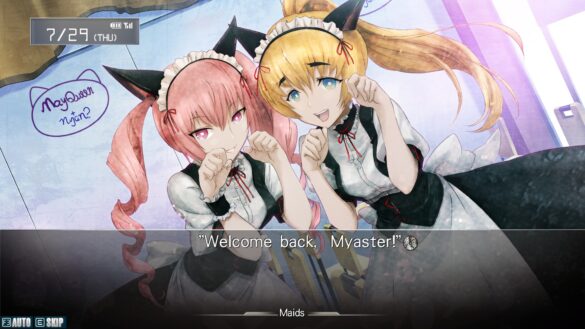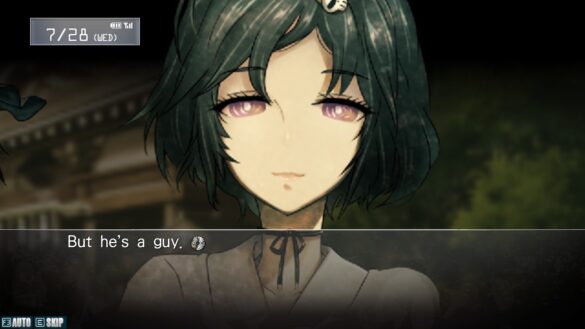Written by jin0uga, edited by Otaku Apologist
Visual novels are criticized for lack of gameplay, shitty plots, and the tendency to rely on overused tropes such as chick-magnet protagonists or women with huge boobs. There are dicks out there who think certain types of games are better than others, and these same people beat down anything distinctly anime. It pisses me off.
My response is to shove Steins;Gate in their faces. This game proves how much potential this genre holds when executed correctly. This game is one of the finest visual novels ever made, featuring a time travel science-fiction story with great characters, gorgeous art, and a fantastic plot. It was first released on October 2009, developed by 5pb and Nitroplus. The game was localized by JAST USA.
This game is a prime example of what interactive visual novels are capable of.
What would happen if you could change the past? The story follows Okabe Rintaro and his band of merry-making friends as they stumble upon the discovery of a lifetime – the means to send an email to the past via modified microwave. They play around with this power, blissfully unaware of the severity of their actions. The consequences soon make themselves known and their lives spiral out of control as a shadowy organization takes its first steps towards world domination.
The premise might sound absurd, but the writing is solid. It weaves real world theories like The Butterfly Effect, Grandfather Paradox, and Cosmic Strings into its narrative. While Steins;Gate may be a fictional story set in Japan, the writers clearly researched the science behind time travel, making the game feel grounded in reality.
The only other visual novel with a similar premise that could rival Steins;Gate is Nine Hours, Nine Persons, Nine Doors.

Steins;Gate showcases the importance of build-up and comedy. The visual novel doesn’t simply rush into the consequences of meddling with the past. We’re slowly introduced to the protagonist, his world as how he views it, and to the people he cares about. The game immerses you in Okabe’s life. He’s a pretty damn weird guy, even by anime standards.
Okabe is a Chunnibyou, a derogatory term referring to a delusional person who thinks they have special powers. Constantly sporting a white lab coat, he refers to himself as Hououin Kyouma, a self-proclaimed mad scientist. His ridiculous behaviour usually sets the comedic tone, and as the story progresses, the reader becomes used to his quirky antics. His friends are similarly strange, but no less lovable.
Then, the plot thickens. The group’s time altering shenanigans begin to unravel Okabe’s life. The heart-wrenching events that occur are felt more keenly due to the sudden absence of the game’s normalized humour. The illusion of safety is broken and things take a turn for the worse.
I’m still playing this game, and right now I’m genuinely terrified for the characters. I’m struck speechless by events they have to suffer through. When they hurt, I hurt. It’s like seeing a friend getting plowed by a truck in front of your eyes.

In mainstream media, edgy, dark stories are heralded as mature pieces of entertainment. They have plots or storylines that practically drip with despair, countless scenes showing the wretchedness of humanity and the hopelessness of it. The problem with a story that’s depressing all the time is that your audience eventually becomes desensitized to it. Humans are adaptable, they get used to pain. Shitty and terrible things can be shrugged off like a used condom after they happen for the hundredth time.
The brilliant thing about Steins;Gate writing is that it manages to subvert expectations. The tone of the story can change at the drop of a hat. It’s hard not to be surprised as Okabe struggles to save his friends while avoiding malicious SERN operatives. I look forward to exploring everything the game has to offer. There are six endings. I’ve gotten three so far and each has been satisfying, even if heart breaking in their own right.
Steins;Gate has been slammed for its obnoxiously slow beginning, but the climax is worth the wait. The build-up is capitalized. Once the pace picks up, there is no getting off the ride. You can expect my official review of this fabulously dramatic visual novel in the coming weeks.
The game is available for download on JLIST or Steam.









